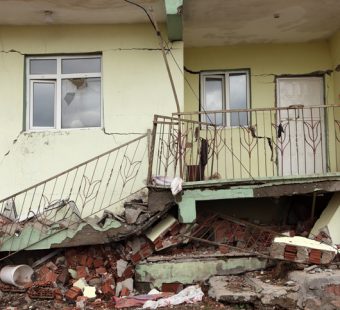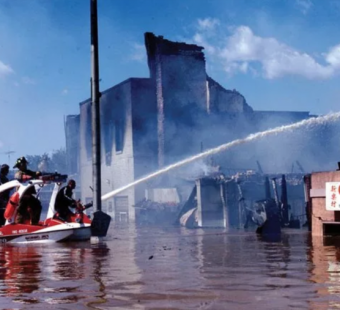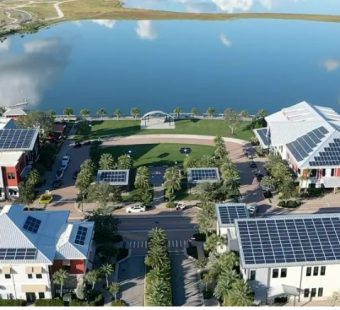Women’s History Month Karen Clark: A Model of Success
By Loretta Worters, Vice President, Media Relations, Triple-I
3/23/2021
Like many people, Karen Clark’s career was influenced by circumstances and serendipity rather than advanced planning. In graduate school she developed a love of building computer models, leading to her first job in the research department of Commercial Union Assurance.
“One of my first assignments was to figure out if the insurer had too much coastal exposure because they had been growing along the coastline,” said Clark. “I started to research hurricanes and how I could potentially build a model to estimate hurricane losses.”
That research ultimately led Clark to write her seminal paper “A Formal Approach to Catastrophe Risk Assessment and Management,” published in the Casualty Actuarial Society Proceedings, in which she argued for probabilistic models rather than the subjective rules of thumb then used in underwriting.
“Catastrophe modeling was a game-changer because it introduced a whole new way of understanding and managing risk,” Clark explained. “We don’t just look at worse-case scenarios, but we develop a probability distribution of potential outcomes. What are the chances of a $1 billion versus a $10 billion hurricane loss? You need probabilities so you can evaluate how likely you are to have a solvency-impairing event and how much reinsurance you want to purchase and for pricing the product. You also need to know what the costs and benefits are of different mitigation strategies. That’s what was missing prior to the catastrophe models.”
Being Taken Seriously as a Woman in the Insurance Industry
When Clark first started out, catastrophe reinsurance was primarily written out of Lloyd’s of London. “Lloyd’s was 100% male,” she laughed. “I gave my first presentation in the Lloyd’s Library to about 100 male underwriters. Not only was I a woman, but I was an American woman, and I was seven months pregnant,” she said. “Along with that, I was carting this portable computer. Many underwriters had never seen a portable computer, much less used one.
“After my presentation, there was silence in the room, and little interest, but that didn’t dissuade me. I was determined to find those innovators and forward thinkers and I did find a few in Lloyd’s and in the U.S., who helped me to develop AIR’s first product, CATMAP.”
Clark said it is important early on to find those forward thinkers who believe in what you’re doing and are willing to make a commitment. She advised women not to take no for an answer and to be good communicators. “You always have to ask for what you want. The worst that can happen is you get a no.”
Clark hasn’t looked back since. As founder of the first catastrophe modeling company, Applied Insurance Research, later AIR Worldwide, she became an internationally recognized expert in the new field of catastrophe risk modeling, revolutionizing the way insurers, reinsurers and financial institutions manage their catastrophe risk.
Clark declined many offers to sell her company over the years, but eventually decided to sell AIR to Insurance Services Office (ISO). Several years later, she co-founded Karen Clark & Company (KCC) with her business partner, Vivek Basrur, never intending to develop catastrophe models again. “But as my partner likes to say, life is what happens when you have other plans.”
Reinventing an industry
“Through numerous consulting engagements with global (re)insurers we discovered the models were not meeting all the needs of the senior level decisions makers. We started hearing several consistent themes and eventually developed what we called the CEO Wish List”, said Clark.
That CEO Wish List informed the KCC vision for a new generation of catastrophe models—models that are more accurate, fully transparent, and provide decision makers with additional risk metrics and insight into large loss potential. “We didn’t change the fundamental structure of the models”, says Clark, “but rather how the models are delivered to (re)insurers and how they can be leveraged in new ways.”
Clark said that KCC is doing a few things differently than other modelers and one of them is their scientific approach. “Rather than extrapolating from historical data, we have implemented advanced physical modeling techniques for the more frequent events, such as severe convective storms, winter storms, and extratropical cyclones. This enables our models to capture all weather-related claims and not just those defined as catastrophes. Our internal systems automatically ingest over 30 gigabytes of data a day from all the satellites, radar stations and global models so our clients have high resolution hazard footprints every morning for monitoring and managing daily claims activity.
“Interestingly, reinventing the catastrophe modeling industry was just as challenging as inventing it”, says Clark, “because most people thought it was impossible.” “We again had to find those industry leaders and early adopters who believed in our vision and then worked with us to make it a reality.”
Clark said she’s very fortunate she discovered her passion at a young age when she first started her career. I just love what I do, and until I can come up with something else that I could enjoy doing daily as much as I enjoy KCC, I’ll be right here.”



